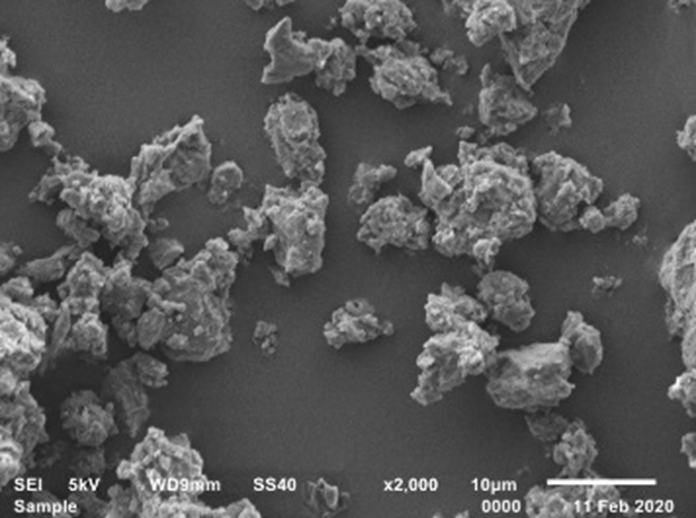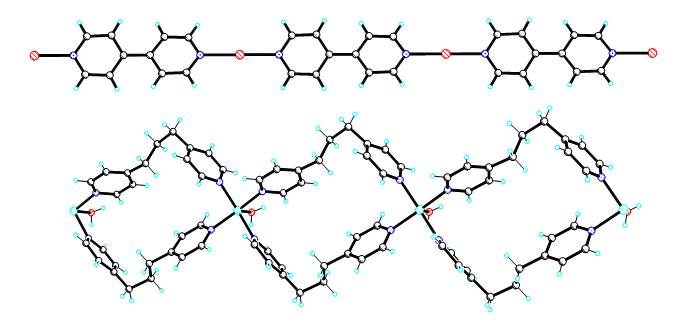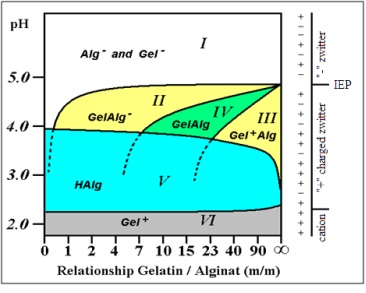Chemistry Journal of Moldova
Supramolecular chemistry
Author(s):
Field: Supramolecular chemistry
Type: Research paper
Issue: 2022 Volume 17, no.2
Pages: 109-119
Marina Zveaghintseva, Eugenia Stingaci, Serghei Pogrebnoi, Lucian Lupascu, Alic Barba, Gheorghe Duca, Vladimir Valica, Livia Uncu, Victor Kravtsov, Dumitru Terteac, Alexandr Brinzan, Fliur Macaev
Field: Supramolecular chemistry
Type: Research paper
Issue: 2022 Volume 17, no.2
Pages: 109-119
Full Text (PDF): Download
Graphical Abstract. In this work new methods to obtain complexes from β-cyclodextrin and dehydroabietic acid with chromenol-triazol hybrid with the sizes limits of approximately 0.1-250 μm are reported. Kneading, co-evaporation and co-precipitation for the resolution of racemic 2-tert-butyl-3-(1H-1,2,4-triazol-1-yl)-2H-chromen-2-ol for obtaining micro- and nanoparticles have been optimized. In vitro dissolution studies of the synthesized compounds in phosphate buffer (pH 6.8) showed an improved dissolution rate of chromenol-triazol hybrid in the inclusion complexes compared to the free form. The obtained β-complexes of β-cyclodextrin loaded with dehydroabietitoic acid and chromenol hybrid showed good antibacterial activity with MIC and MBC values ranging from 0.72 to 44.45 μM.

Downloads: 72
Author(s):
Field: Supramolecular chemistry
Type: Research paper
Issue: 2020 Volume 15, no.2
Pages: 45-53
Nguyen Thi Thu Thuy, Do Hoang Giang, Pham Khac Linh, Nguyen Tien Dat
Field: Supramolecular chemistry
Type: Research paper
Issue: 2020 Volume 15, no.2
Pages: 45-53
Full Text (PDF): Download
Graphical Abstract: Polysaccharides from the pods of haricot vert (Phaseolus vulgaris L.) were extracted using a simple heating method, by varying extracting temperature, heating time, solid-to-liquid ratio, and solvent compositions. The obtained results were processed using statistical analysis that helped to identify the optimal conditions for the polysaccharides’ extraction process. This study represents a promising production method of bioactive polysaccharides extract in the food and pharmaceutical industry.


Downloads: 148
Author(s):
Field: Supramolecular chemistry
Type: Research paper
Issue: 2019 Volume 14, no.1
Pages: 120-127
Aliona Vitiu
Field: Supramolecular chemistry
Type: Research paper
Issue: 2019 Volume 14, no.1
Pages: 120-127
Full Text (PDF): Download
Abstract (PDF)
Graphical Abstract: Two new 1D coordination polymers based on octahedral Fe(II) and square-pyramidal Cu(II) complexes and N,N'-bipyridine-type ligands were synthesized by slow evaporation method. The compounds with the formula {(bpyH2)•[Fe(bpy)2(H2O)2(SO4)2]•2(H2O)}n and {[Cu(bpp)2(H2O)]•(BF4)2•dmf•0.75(H2O)}n, (where bpy= 4,4'-bipyridine and bpp= 1,3-bis(4-pyridyl)propane, dmf= N,N-dimethylformamide) were characterized by thermal analysis, FT-IR spectroscopy and single crystal X-ray diffraction method.

Graphical Abstract: Two new 1D coordination polymers based on octahedral Fe(II) and square-pyramidal Cu(II) complexes and N,N'-bipyridine-type ligands were synthesized by slow evaporation method. The compounds with the formula {(bpyH2)•[Fe(bpy)2(H2O)2(SO4)2]•2(H2O)}n and {[Cu(bpp)2(H2O)]•(BF4)2•dmf•0.75(H2O)}n, (where bpy= 4,4'-bipyridine and bpp= 1,3-bis(4-pyridyl)propane, dmf= N,N-dimethylformamide) were characterized by thermal analysis, FT-IR spectroscopy and single crystal X-ray diffraction method.

Downloads: 233
Author(s):
Field: Supramolecular chemistry
Type: Research paper
Issue: 2017 Volume 12, no.2
Pages: 102-108
Ecaterina Tocana, Anatolii Siminel, Lilia Croitor
Field: Supramolecular chemistry
Type: Research paper
Issue: 2017 Volume 12, no.2
Pages: 102-108
Full Text (PDF): Download
Graphical Abstract: New supramolecular systems of Ni(II) and Cd(II) with 1,10-phenanthroline constructed by non-covalent interactions have been synthesized and characterized by single-crystal X-ray diffractometry. The smaller nickel(II) ion forms a cis complex with outer-sphere perchlorates, while the cadmium(II) ion forms a trans complex involving inner-sphere perchlorates. Both compoundsrevealintraligand-basedluminescentproperties.


Downloads: 108
Author(s):
Field: Supramolecular chemistry
Type: Research paper
Issue: 2016 Volume 11, no.2
Pages: 17-25
Albert Ivancic
Field: Supramolecular chemistry
Type: Research paper
Issue: 2016 Volume 11, no.2
Pages: 17-25
Full Text (PDF): Download

Downloads: 107
Author(s):
Field: Supramolecular chemistry
Type: Research paper
Issue: 2016 Volume 11, no.1
Pages: 97-105
Alexei Baerle, Olga Dimova, Irina Urumoglova, Pavel Tatarov, Larisa Zadorojnai
Field: Supramolecular chemistry
Type: Research paper
Issue: 2016 Volume 11, no.1
Pages: 97-105
Full Text (PDF): Download
DOI: dx.doi.org/10.19261/cjm.2016.11(1).13
Graphical Abstract: Phase state and the charge of colloidal particles in the gelatine-polyuronate system were studied. A method for comparative evaluation of molecular weight of colloids by means of viscosimetric measurements and electrophoresis was developed. It is shown that the Diagram {Phase state = f (composition, pH)} contains six well-defined regions. The diagram explains and predicts the behaviour of protein-polysaccharide colloids, which are included in beverages or forms the shells of oil-containing microcapsules.

The article is Open Access by CC-BY 4.0 License
Cite this article as: A. Baerle, O. Dimova, I. Urumoglova, P. Tatarov, L. Zadorojnai. Phase Diagram of Gelatine-Polyuronate Colloids: Its Application For Microencapsulation and not Only. Chemistry Journal of Moldova, 2016, 11(1), pp. 97-105. DOI: dx.doi.org/10.19261/cjm.2016.11(1).13
Article Source: Phase Diagram of Gelatine-Polyuronate Colloids: Its Application For Microencapsulation and not Only.
Download article metadata: CrossRef BibTeX CERIF Google Scholar DataCite Dublin Core
Downloads: 59
Author(s):
Field: Supramolecular chemistry
Type: Research paper
Issue: 2014 Volume 9, no.1
Pages: 132-135
Gabriela Ciobanu, Constantin Luca, Octavian Ciobanu
Field: Supramolecular chemistry
Type: Research paper
Issue: 2014 Volume 9, no.1
Pages: 132-135
Full Text (PDF): Download
DOI: dx.doi.org/10.19261/cjm.2014.09(1).18
Graphical Abstract: In this study, the porous hydroxyapatite-filled cellulose acetate scaffolds were prepared via dry-wet phase inversion method by dispersing hydroxyapatite nanoparticles in the polymeric matrix. The calcined hydroxyapatite prepared by wet precipitation method has the crystal size smaller than 50 nm. The unfilled and hydroxyapatite-filled cellulose acetate scaffolds have an asymmetric structure consisting of two layers, the dense top layer (active layer) supported by the porous sub-layer (substructure). The cross-sectional SEM images revealed that hydroxyapatite nanoparticles were well dispersed in the cellulose acetate matrix.
Downloads: 44
Author(s):
Field: Supramolecular chemistry
Type: Research paper
Issue: 2009 Volume 4, no.2
Pages: 100-104
Anca-Dana Bendrea, Ana-Maria Catargiu and Mircea Grigoras
Field: Supramolecular chemistry
Type: Research paper
Issue: 2009 Volume 4, no.2
Pages: 100-104
Full Text (PDF): Download
Author(s):
Field: Supramolecular chemistry
Type: Research paper
Issue: 2009 Volume 4, no.2
Pages: 94-99
Jalil Moubarak, Elodie Moreno, Eric Diesis and Anthony W. Coleman
Field: Supramolecular chemistry
Type: Research paper
Issue: 2009 Volume 4, no.2
Pages: 94-99
Full Text (PDF): Download
DOI: dx.doi.org/10.19261/cjm.2009.04(2).04
Graphical Abstract: The binding of para-Sulphonato-calix[4]arene to a series of Serum Albumin Proteins has been studied using Electrospray Mass Spectrometry, each protein shows different capacities to interact with para-Sulphonato-calix[4]arene, including the number of ligands bound, the Association Constants observed, and the stoichiometries at which the onset of each binding event is observed.
Downloads: 10
Author(s):
Field: Supramolecular chemistry
Type: Research paper
Issue: 2009 Volume 4, no.2
Pages: 86-93
Oleksandr Shkurenko, Kinga Suwinska, Florent Perret, Katia Sigaud, Antoine Leydier, Said Jebors and Anthony W. Coleman
Field: Supramolecular chemistry
Type: Research paper
Issue: 2009 Volume 4, no.2
Pages: 86-93
Full Text (PDF): Download
DOI: dx.doi.org/10.19261/cjm.2009.04(2).05
Graphical Abstract: Diamino-bicycloundecane mono-deprotonates H-calix[4]arene and the solid-structure of the resulting salt has been determined by X-ray crystallography. Two different complexes are present in the structure with the Diamino-bicycloundecane cation held in the calix[4]arene cavity by CH-p interactions. In the packing there is a hydrogen-bonded polymeric chain. Both the complexes formed layered structures with differing inter-layer distances.
Downloads: 12






